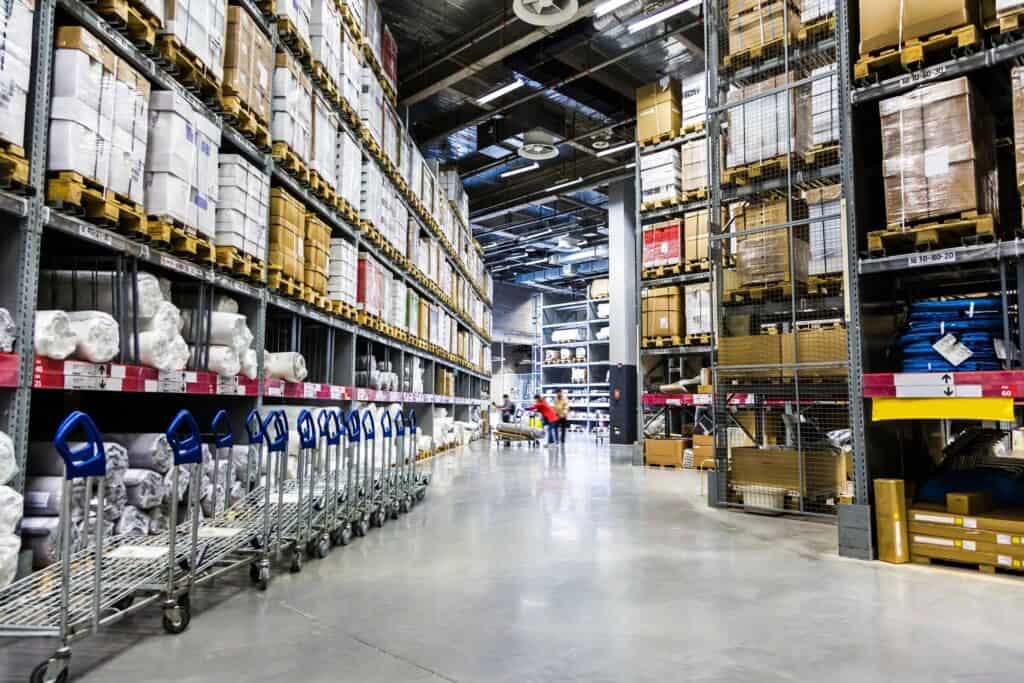In the ever-evolving realm of supply chain management, businesses are increasingly turning to third-party logistics (3PL) solutions to streamline operations and gain a competitive edge. This expansive article delves deep into the world of 3PL logistics, shedding light on key aspects such as warehousing excellence, global transportation networks, flexibility, technology integration, cost optimization, sustainability efforts, and future-proofing strategies.
Warehousing Excellence: Beyond Storage
At the core of 3PL logistics lies the concept of warehousing excellence, transforming these facilities into much more than mere storage spaces. State-of-the-art warehouses are strategically equipped to offer advanced inventory management systems, providing real-time visibility and strategic management of goods.
Tailoring Warehouses to Industry Needs
An integral part of 3PL solutions is the customization of warehouses to meet specific industry requirements. Whether it’s pharmaceuticals with stringent temperature controls or e-commerce with a focus on order-picking automation, the tailoring of warehouses ensures alignment with diverse business needs.
Advanced Inventory Management Systems
Going beyond conventional storage, cutting-edge 3PL warehouses integrate advanced inventory management systems. These systems leverage technologies like RFID (Radio-Frequency Identification) for real-time tracking, ensuring accuracy and efficiency in inventory management.
Robotics and Automation
In the pursuit of efficiency, warehouses under 3PL management embrace robotics and automation. Automated picking systems, robotic arms for heavy lifting, and autonomous vehicles for intra-warehouse transportation contribute to enhanced operational efficiency.
Global Reach: Efficient Transportation Networks
In a world where global commerce knows no bounds, efficient transportation is a linchpin of successful logistics. 3PL logistics models integrate vast networks of carriers, ensuring products reach their destinations swiftly and cost-effectively.
Last-Mile Precision and Customer Satisfaction
The final stretch of the delivery journey, known as the “last mile,” holds immense importance. 3PL logistics strategies include last-mile precision, employing advanced route optimization and real-time tracking to redefine the last-mile experience, enhancing overall customer satisfaction.
Intermodal Transportation for Seamless Operations
Beyond the last mile, 3PL solutions specialize in intermodal transportation, leveraging road, rail, and sea routes for a seamless, multi-modal network. This approach not only enhances efficiency but also provides cost savings and environmental benefits.
Real-time Shipment Tracking
Technology integration extends to real-time shipment tracking. The use of GPS and advanced tracking systems allows businesses and end consumers to monitor shipments in real-time, fostering transparency and reducing uncertainties.
Core of 3PL: Flexibility and Scalability
The dynamism of modern business landscapes demands logistics solutions that can adapt swiftly. At the core of 3PL logistics models is the principle of flexibility and scalability.
Agile Responses to Market Fluctuations
Flexibility goes beyond scalability; it’s about responsiveness. The agile nature of 3PL logistics allows swift adjustments to market fluctuations, demand spikes, or unforeseen challenges. Businesses gain a competitive edge by having a flexible logistics partner to navigate the uncertainties of the marketplace.
Scalable Technology Infrastructure
Scalability extends to the technology infrastructure supporting logistics operations. 3PL providers invest in scalable systems that can handle increased data volumes, ensuring a seamless transition as businesses grow.
Multi-tiered Scalability
In addition to scalability in technology, 3PL solutions offer multi-tiered scalability in warehouse space, transportation capabilities, and overall logistics infrastructure. This multi-faceted scalability ensures that as businesses expand, their logistics partner can seamlessly accommodate the growth.
Advanced Technology Integration: The Drive for Efficiency
In the digital age, technology acts as a catalyst for logistics efficiency. 3PL logistics solutions leverage advanced technologies to provide unparalleled visibility, control, and efficiency throughout the supply chain.
RFID Technology for Enhanced Visibility
Real-time visibility is a game-changer in logistics. The use of Radio-Frequency Identification (RFID) technology allows for instant tracking of shipments, reducing the risk of errors and enhancing overall transparency in the supply chain.
Cloud-Based Systems for Analytics and Insights
Technological prowess extends to cloud-based systems providing real-time analytics and actionable insights. Predictive analytics help in forecasting demand, optimizing inventory levels, and mitigating potential disruptions. Embracing the latest technological advancements ensures that supply chains are not just efficient today but also future-ready.
Artificial Intelligence and Machine Learning
The integration of artificial intelligence (AI) and machine learning (ML) further enhances logistics capabilities. AI algorithms analyze vast datasets to provide valuable insights into demand patterns, warehouse operations, and transportation routes. Machine learning, on the other hand, enables systems to learn and adapt, continuously improving decision-making processes.
Cost Optimization: A Strategic Advantage
Cost efficiency is a cornerstone of 3PL logistics philosophy. By outsourcing logistics functions to experts, businesses can achieve significant cost savings.
Route Optimization for Cost-Efficient Transportation
Strategic cost optimization includes route optimization to ensure efficient transportation. By identifying the most cost-effective routes, businesses can reduce transit times and associated costs.
Demand Forecasting for Efficient Inventory Management
Accurate demand forecasting is crucial for maintaining optimal inventory levels and minimizing excess stock. 3PL logistics solutions integrate advanced forecasting algorithms, ensuring that supply chains are finely tuned to meet actual demand. This not only reduces carrying costs but also minimizes the risk of stockouts.
Continuous Improvement through Cost-Benefit Analyses
Cost optimization involves maximizing value. Expert teams conduct thorough cost-benefit analyses to identify areas for improvement and innovation. Constant refinement of processes and embracing cost-effective technologies ensures that logistics operations are not just efficient but also economically sound.

Sustainability in 3PL: Towards a Greener Future
In an era where environmental consciousness is paramount, 3PL logistics models include robust sustainability strategies. Acknowledging the impact of logistics on the environment, efforts are made to minimize the carbon footprint.
Eco-friendly Transportation Choices
Sustainability efforts are evident in transportation choices. Prioritizing eco-friendly options, including electric and hybrid vehicles, helps reduce emissions. Investing in a green fleet contributes to cleaner air and a healthier planet.
Sustainable Warehousing Practices
Sustainability extends to warehouses, incorporating energy-efficient lighting and waste reduction strategies. Adopting sustainable warehousing practices aims to create a greener and more responsible supply chain.
Carbon Offset Programs
To counteract unavoidable emissions, many 3PL providers engage in carbon offset programs. Investing in initiatives such as reforestation or renewable energy projects helps balance the environmental impact of logistics operations.
Future-proofing Warehouses: Adapting to Tomorrow
As technology advances, future-proofing warehouses becomes a strategic imperative. 3PL logistics approaches take into account future scalability and adaptability.
Modular Designs for Adaptable Warehouses
Warehouses designed with modular layouts ensure seamless expansions or modifications. As businesses grow, the ability to adapt the physical layout of warehouses becomes crucial. Modular designs facilitate easy modifications, allowing for efficient scaling without disrupting ongoing operations.
Embracing Evolving Technologies
The pace of technological advancements is relentless. Machine learning algorithms and artificial intelligence integration are on the horizon, promising even greater efficiency and predictive analytics. Staying abreast of technological developments ensures that warehouses are not just equipped for today’s challenges but are ready for the challenges of tomorrow.
Predictive Analytics for Anticipating Demand
The integration of predictive analytics enables businesses to anticipate demand trends accurately. By analyzing historical data and market indicators, warehouses can proactively adjust inventory levels and operational capacities, ensuring readiness for future demands.
In Conclusion: Embracing 3PL Logistics for Future Success
In the dynamic landscape of modern supply chain management, staying competitive requires embracing the latest technologies. 3PL logistics solutions are not just services; they represent a strategic advantage. The combination of warehousing excellence, global transportation reach, flexibility, technology integration, cost optimization, sustainability efforts, and future-proofing sets the stage for operational excellence.
As businesses navigate the complexities of global trade, 3PL logistics solutions provide a roadmap to efficiency, sustainability, and resilience. From ensuring last-mile precision to implementing cutting-edge technologies, the evolution of 3PL logistics is not just about meeting today’s demands; it’s about preparing for the demands of the future.
In a world where logistics excellence is the key to success, partnering with a forward-thinking 3PL provider becomes a strategic imperative. The journey towards a future-proof, efficient, and sustainable supply chain begins with the right logistics partner.
